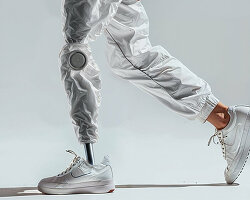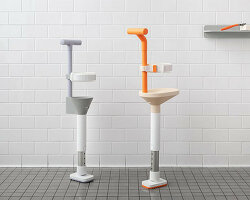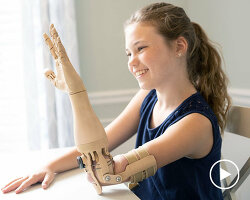researchers at columbia engineering solve a long-standing issue in the creation of untethered soft robots whose actions and movements can mimic natural biological systems. a group in the creative machines lab has developed a 3D printable synthetic soft muscle — an artificial active tissue with intrinsic expansion ability that does not require an external compressor, or high voltage equipment as previous artificial muscles required. the material has a strain density (expansion per gram) that is 15 times larger than natural muscle, and can lift 1000 times its own weight.
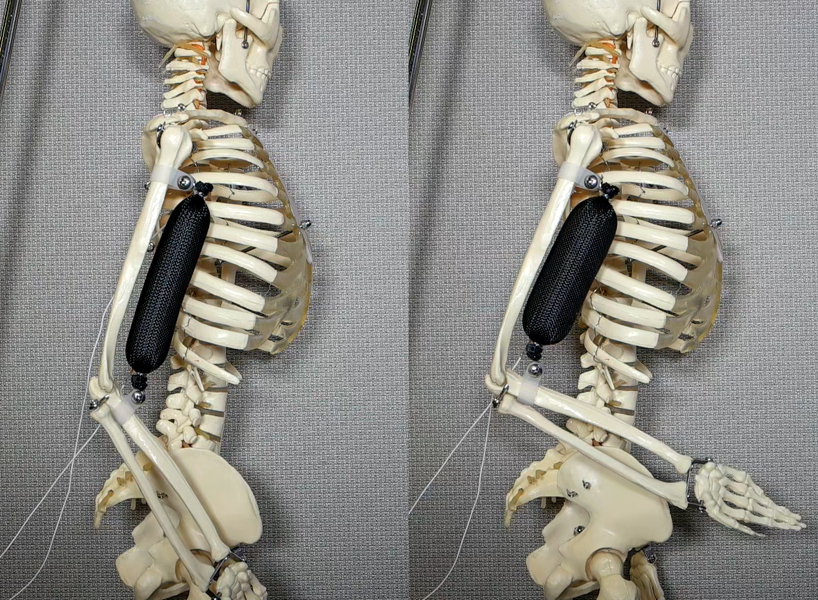
all images © aslan miriyev/columbia engineering
influenced by living organisms, soft material robotics hold great promise for areas where robots need to contact and interact with humans, such as manufacturing and healthcare. unlike rigid robots, soft robots can replicate natural motion — grasping and manipulation — to provide medical and other types of assistance, perform delicate tasks, or pick up soft objects. to achieve an actuator with high strain and high stress coupled with low density, the creative machines lab used a silicone rubber matrix with ethanol distributed throughout in micro-bubbles. the solution combined the elastic properties and extreme volume change attributes of other material systems while also being easy to fabricate, low cost, and made of environmentally safe materials.

after being 3D printed into the desired shape, the artificial muscle is electrically actuated using a thin resistive wire and low-power (8 volts). it was tested in a variety of robotic applications where it showed significant expansion-contraction ability, being capable of expansion up to 900% when electrically heated to 80°c. via computer controls, the autonomous unit is capable of performing motion tasks in almost any design. previously, no material has been capable of functioning as a soft muscle due to an inability to exhibit the desired properties of high actuation stress and high strain.
‘we’ve been making great strides toward making robots minds, but robot bodies are still primitive,’ comments hod lipson, professor of mechanical engineering at columbia university. he continues, ‘this is a big piece of the puzzle and, like biology, the new actuator can be shaped and reshaped a thousand ways. we’ve overcome one of the final barriers to making lifelike robots.’
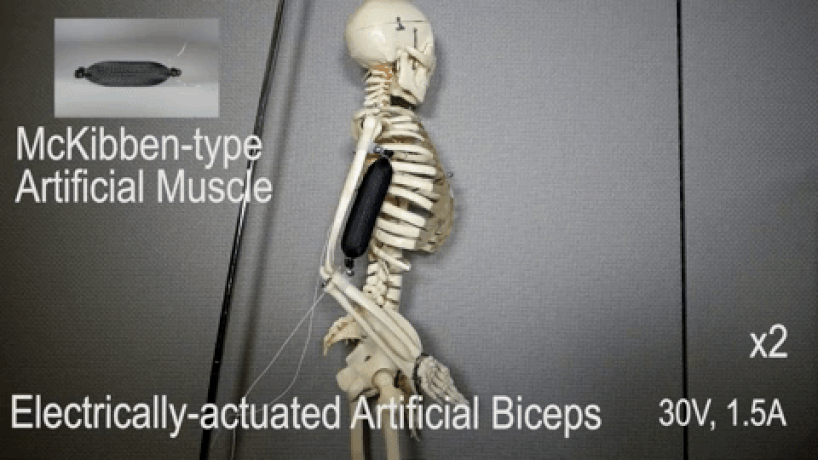
Save

